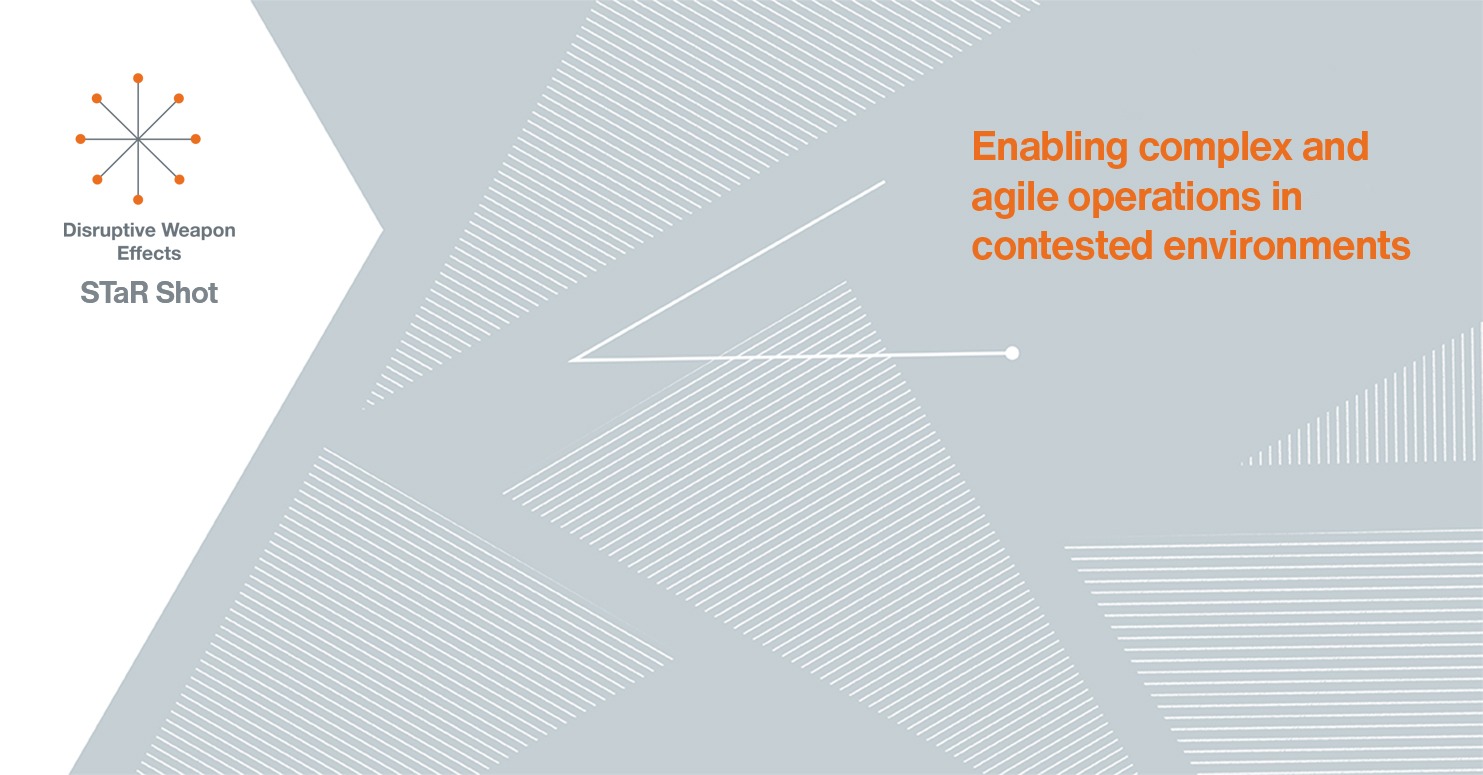Enabling complex and agile operation in contested environments
Do you work in the areas of AI, robotics and autonomy, sensing, navigation and control, teaming, advanced propulsion systems, advanced material and energetics?DIN is calling for capability statements from our universities and SMEs to help Defence counter a new wave of emerging challenges.
Background
The emergence of new advanced and unconventional weapons is transforming the battlefield. The introduction of novel approaches to applying kinetic and non-kinetic effects, and the progress made in AI-enabled technologies create new risks and challenges.
To address the impact of these emerging and disruptive technologies and counter the threat, we require input from multiple disciplines and a range of skills and expertise in system design and integration, and in modelling, simulation and testing.
Call for capability statements
To support this challenge, the DIN is calling for capability statements from Australian universities, SMEs and publicly funded research organisations covering the following areas:
1. Sensors and Fusion — Novel sensor technologies; multi-mode sensors; distributed and coordinated sensing; sensor-data fusion and processing.
2. Power, Energy and Propulsion – Advanced materials and manufacturing methods to improve performance and reduce size, weight and power needs of weapons systems; collect, store and employ energy in efficient ways to maximize performance or endurance; small-sized, thrust-on-demand propulsion concepts, high performance energetic material.
3. Systems Guidance, Navigation and Control — Cognitive and visual navigation; distributed control, dynamic task allocation, path planning and trajectory optimisation.
4. Teaming, Swarming and Collaborative tactics– Cooperative, coordinated and collaborative behaviour; group formation and swarm control; reasoning under uncertainty and learning; synthetic environment for modelling and testing of algorithms; ethical and trustworthy systems.
5. Systems and sub-systems engineering – Modular concept design, adaptive and rapidly re-configurable platforms, plug and play modules, miniaturised components and sub-systems, remotely deployable platforms.
These capability statements will be used to inform DSTG about the core capabilities residing in Australia, which can be leveraged to support the “More, Together: Defence Science and Technology Strategy 2030”, and, in particular, the strategic priority STaR Shot focused on “Disruptive Weapon Effects” (DWE).
We acknowledge that many organisations may have significant capabilities spanning more than one area of interest. In order to identify the most relevant universities/industry organisations, we request that within individual organisations submissions are coordinated, prioritised and consolidated.
If an organisation wishes to propose capability in more than one area of interest, we request that you submit separate capability statements specific to the area of interest. However, we wish to limit organisations to no more than 3 submissions.
Following receipt and analysis of the capability statements, DIN (in conjunction with the DWE STaR Shot Lead) will use this information to guide future engagement with the most relevant elements of the Australian innovation ecosystem.
Responses are due on 8 November 2021.
Information Session
To learn more about the Disruptive Weapon Effects STaR Shot and how you can be involved, the DIN is organising an information session on Tuesday, 19 October 2021 at 10.00 -11.00 AM with STaR Shot Leader Nathalie Colineau.
Please register your intent to attend this forum here.









